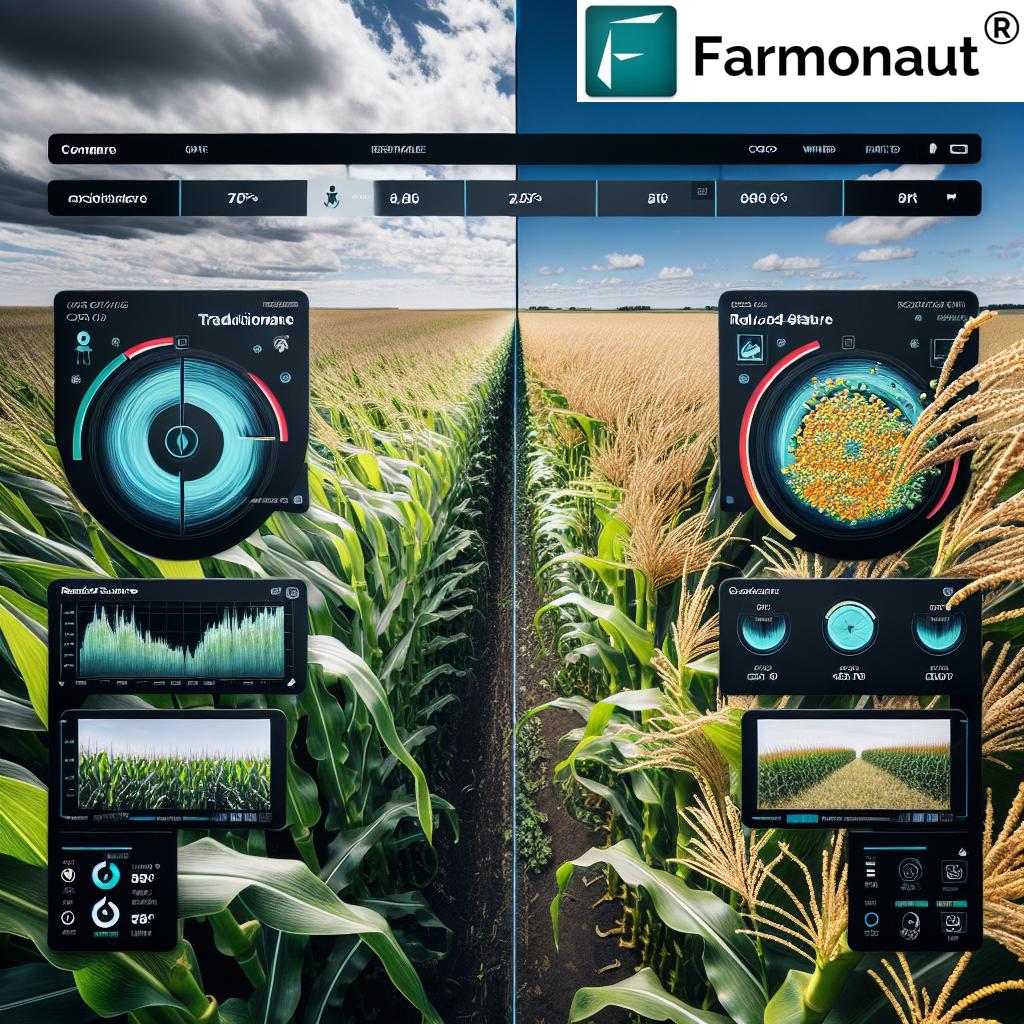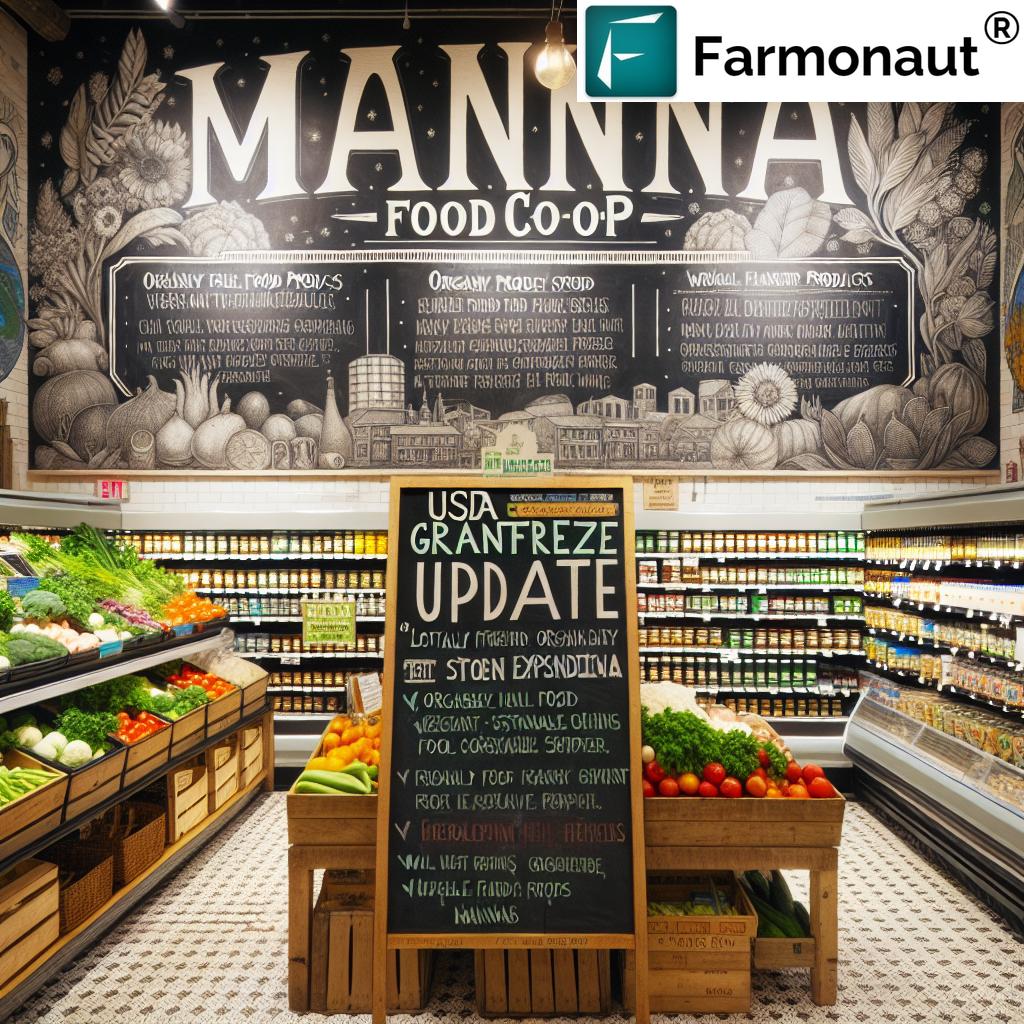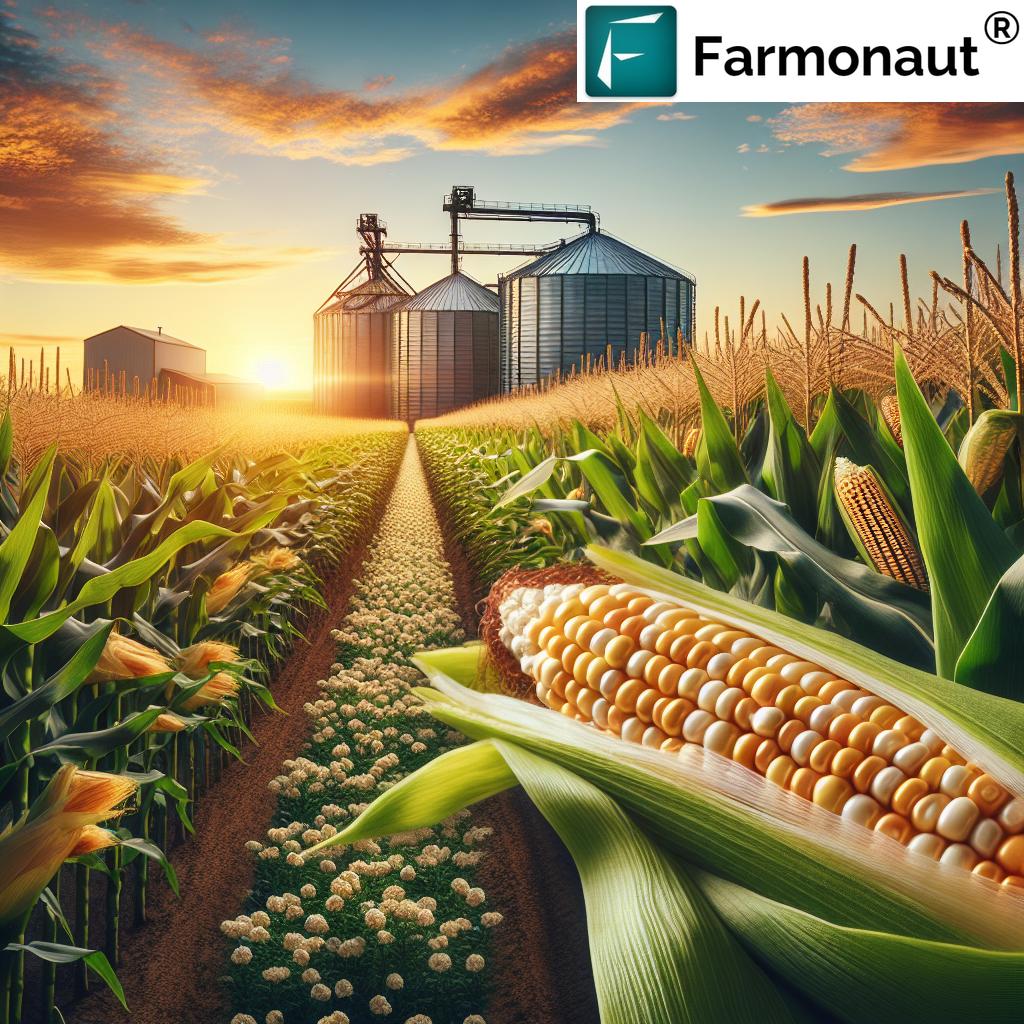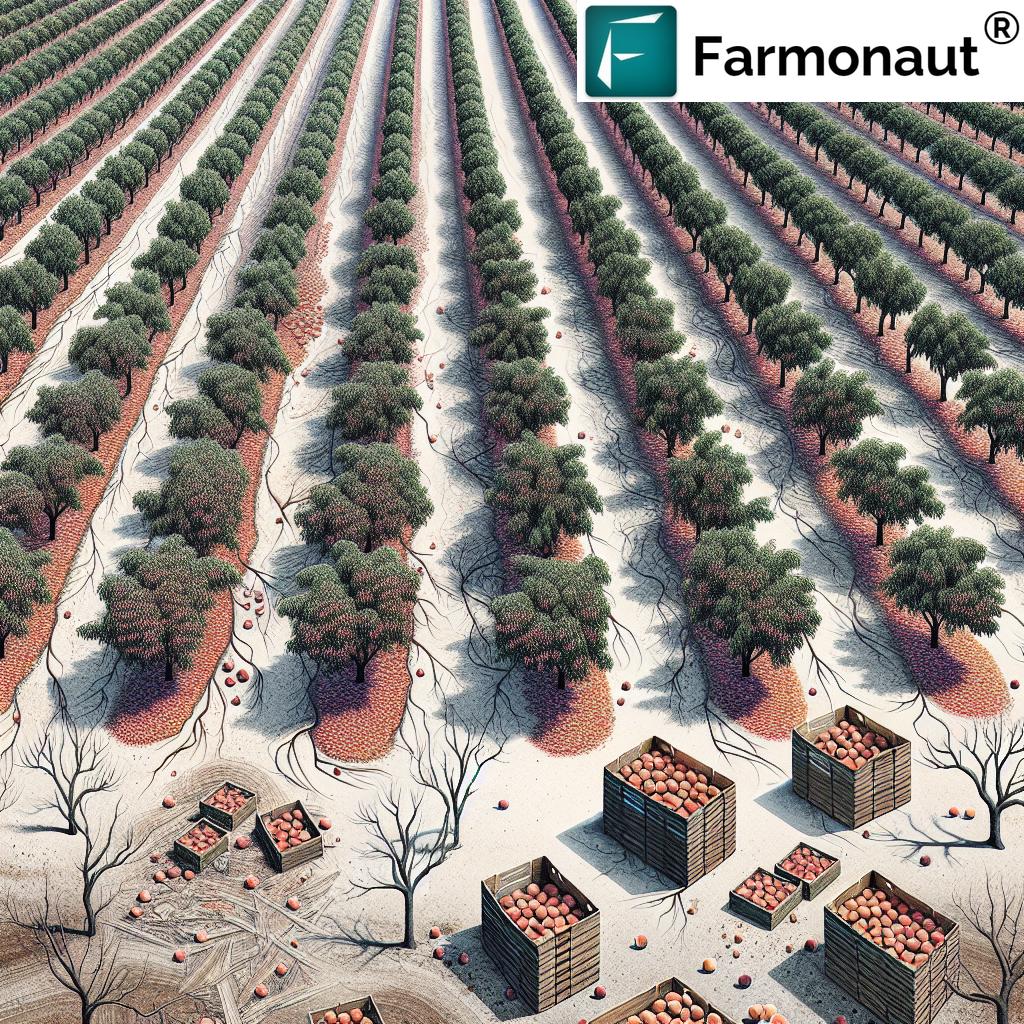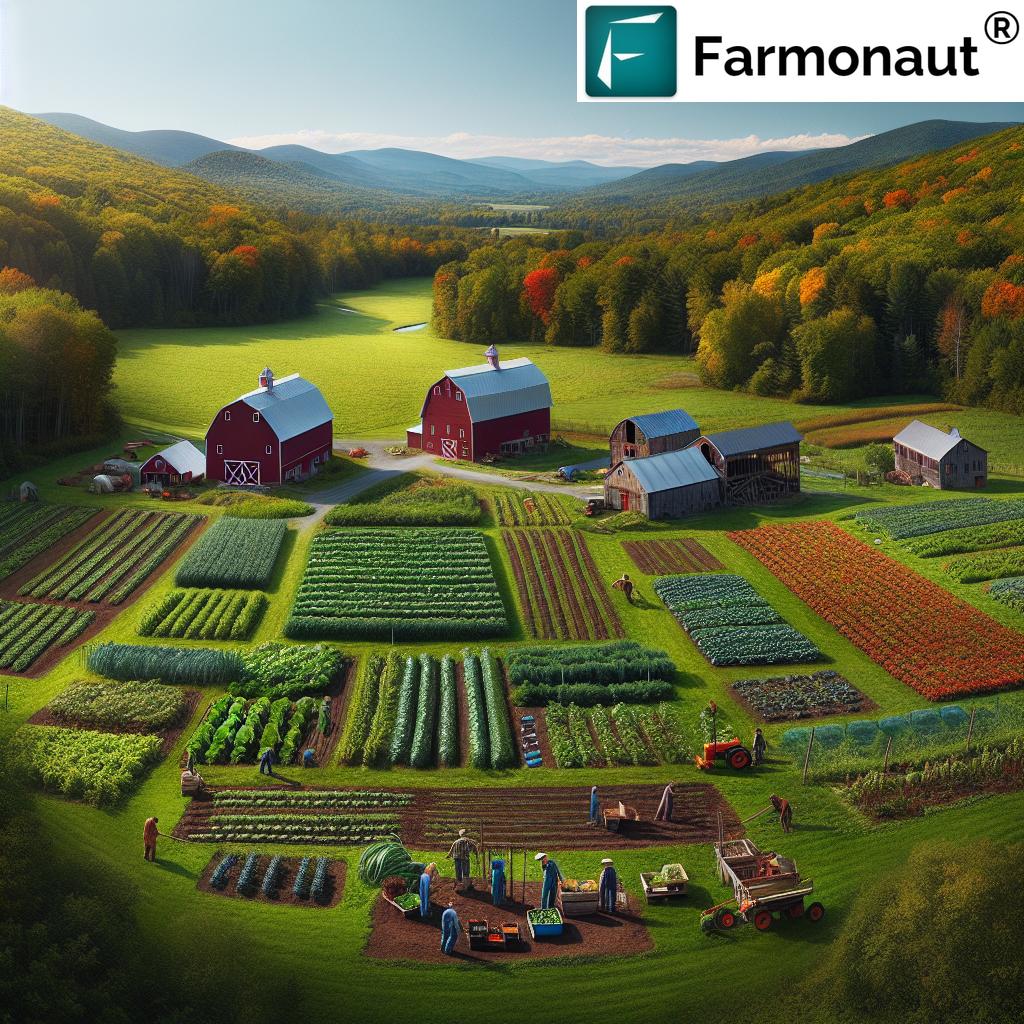Cultivating the Soil: Cotton Cultivation in USA 2025
Summary: Cotton Cultivation in the USA: Trends and Sustainability in 2025
Table of Contents
- Introduction
- Overview of Cotton Cultivation in the USA
- Regional Highlights: Key Cotton-Growing States
- Cultivation Practices and Technological Innovations
- Precision Agriculture & Monitoring the Landscape
- Sustainability and Environmental Considerations
- Water Management and Irrigation Trends
- Challenges Facing Cotton Cultivation in USA
- Comparative Table: Sustainability Shift in 2025
- Future Prospects & Innovations in Cotton Production
- Farmonaut Technologies Empowering Sustainable Cotton Farming
- FAQ: Cotton Cultivation in USA 2025
- Conclusion
Introduction
Cotton remains one of the most significant cash crops in the United States, and as we step into 2025, it continues playing a crucial role in the American agricultural economy as well as the global textile industry. The ongoing evolution of cotton cultivation in USA is marked by sustainability initiatives, increased efficiency, and technological advancements designed to counter modern climate challenges. This article explores the current landscape of cotton farming in the US, focusing on sustainable cultivation practices, economic and environmental impacts, and the most pivotal future trends shaping the years ahead.
As an integral part of American agriculture, the journey of cultivating the soil for cotton reveals changing methods, climate responses, and global shifts in production and demand. With a constant eye toward the 2025 horizon and beyond, let’s explore how cotton retains its status among the world’s top crops and how producers, with cutting-edge technology and sustainable practices, are shaping the future of American cotton.
Overview of Cotton Cultivation in the USA
The United States is a powerhouse in the global cotton industry, holding rank among the world’s top cotton producers, accounting for a key portion of international supply and demand. The unique distribution, geography, and climate found in the U.S. favor extensive cotton production, particularly in the southern states.
- Cotton Growing Regions: The bulk of U.S. cotton is grown in Texas, Georgia, Mississippi, Arkansas, and North Carolina. Each region specializes in adapting cultivation practices to local conditions, from rainfall to soil types.
- Crop Cycle: The production process typically spans from early spring planting to late autumn harvesting. Cotton requires a long growing season, usually about 180–200 frost-free days, with plenty of sunshine and moderate rainfall.
- Market Position: The USA’s vast acreage, modern equipment, and innovative technologies ensure that it continues to meet both domestic and global demand while maintaining efficiency and sustainability as priorities.
In the context of 2025, cotton’s resilience and adaptability are evidenced by continued investments in sustainable farming practices, emphasis on environmental health, and responses to shifting economic pressures.
Regional Highlights: Key Cotton-Growing States
Let’s dive deeper into the main regions concentrated for cotton cultivation in USA:
- Texas: Dominates the American cotton production, contributing nearly half the nation’s output in recent years. Favorable conditions, such as extended growing seasons, vast acreage, suitable soil, and climate, position Texas at the core of technological and sustainable farming advancements.
- Georgia, Mississippi, Arkansas, North Carolina: Each state adapts their cultivation practices to factors such as rainfall, temperature, and soil health. Collectively, these regions diversify American cotton, supporting a robust agricultural economy.
- Emerging Areas: As climate change affects traditional boundaries, new microclimates open the door for cotton production in previously untapped locales. Advances in GM (genetically modified) cotton varieties designed for heat and drought resistance mean cultivation may expand into marginal lands.
Cultivation Practices and Technological Innovations in 2025
The landscape for cotton cultivation in USA is shifting rapidly, integrating sophisticated technologies and innovative farming procedures to ensure profitability, sustainability, and environmental stewardship.
Precision Agriculture: A Driver for Enhanced Efficiency
- GPS-Guided Equipment: Used for planting, applying fertilizers, and harvesting, maximizing accuracy in the field.
- Unmanned Aerial Vehicles (UAVs): Commonly referred to as drones, UAVs enable monitoring of crop health, detection of pest infestations, and documentation of harvesting progress from above.
- Soil Moisture and Nutrient Sensors: Offer real-time data on the levels of critical parameters, supporting precise irrigation and fertilization schedules and reducing input footprints.
- AI and Machine Learning: Emerging digital platforms use predictive analytics for yield estimates, pest detection, and proactive management, helping producers optimize resource usage.
The value of precision agriculture lies not only in increased efficiency but also in reducing resource wastage—be it water, fertilizers, herbicides, or pesticides. These innovations streamline operations, minimize environmental impact, and ultimately secure better returns for American farmers.
Sustainable Cultivation Practices Becoming Mainstream
Conservation tillage and crop rotation are now standard practice, aiming to maintain soil health and reduce erosion, while cover cropping reinforces soil organic matter and fertility. Producers also incorporate integrated pest management (IPM), blending biological, chemical, and cultural controls to resist pests and safeguard yields with reduced chemical reliance.
- Adoption of GM Varieties: Most U.S. cotton is now genetically engineered for pest and herbicide resistance, enabling farmers to ”do more with less”. This reduces crop losses, boosts yields, and augments farm profitability.
- Reduced-till & No-till Strategies: These approaches reduce erosion, promote carbon sequestration, and help sustain long-term fertility.
- Rotation Practices: Introducing legumes or grains helps “break” pest and disease cycles while nurturing soil nutrients for future cotton crops.
- Cover Cropping: Grown in off-seasons to protect and rejuvenate the soil, reduce runoff, and suppress weeds.
These practices all aim to address climate pressures and maintain high levels of sustainability in the cotton industry. For up-to-date insights on crop health monitoring and supply chain traceability, leveraging solutions like Farmonaut’s real-time monitoring platform empowers growers to make data-driven decisions, reducing environmental footprints and enhancing productivity.
Drip and Subsurface Irrigation systems are increasingly implemented, especially in challenging regions like West Texas, maximizing every drop and delivering improved water-use efficiency. This directly supports answers to the modern demand for water conservation in agriculture.
Precision Agriculture & Monitoring the Cotton Landscape in USA
Technologies utilizing satellite imagery, AI, and other digital tools are transformative for cotton cultivation in USA in 2025. With precision agriculture, farmers not only optimize yield and resource use but also maintain environmental health.
- Satellite-Based Crop Monitoring: Real-time monitoring enables early detection of pest outbreaks, water stress, and nutrient deficiencies—empowering rapid, targeted response and reducing unnecessary resource use. Farmonaut’s platform delivers multispectral satellite imagery for mapping soil conditions and vegetation health (NDVI).
- Blockchain Traceability: Transparency-focused buyers and regulatory bodies benefit from blockchain’s secure, digital recordkeeping. Farmonaut’s traceability solutions build trust throughout the supply chain, from field to textile mill.
- AI-Based Advisory Systems: New AI-driven tools deliver customized, real-time insights on crop management and climate responses. For example, Farmonaut’s Jeevn AI Advisory System analyzes satellite data to provide instant recommendations for pest control, irrigation, and resource planning.
- Fleet and Resource Management: Optimizing logistics—tractors, planters, harvesters—can dramatically reduce downtime and fuel use. Farmonaut’s fleet management tools help monitor and mobilize equipment for efficient planting and harvesting.
With API access (API here | Developer Docs), integrated ag-tech ecosystems become possible, facilitating smarter, interconnected cotton production systems across the southern USA.
Embracing such technological innovations is essential for navigating the pressures and demands of modern cotton farming, particularly to stay resilient against variable weather, pests, and global economic forces.
Sustainability and Environmental Considerations
Promoting sustainable cotton cultivation in USA is more than an industry slogan—it’s a comprehensive shift in values and actions spanning soil health, water use, resource conservation, and climate stewardship.
- Soil Health: Regular monitoring using soil sensors and analytics, combined with crop rotation and cover-cropping, curbs degradation and preserves organic matter for future seasons.
- Water Efficiency: Deployment of precision irrigation (such as drip and subsurface systems) minimizes waste and prevents salinization, especially crucial in arid and drought-prone regions.
- Reduced Emissions & Carbon Sequestration: Conservation tillage, reduced dependence on fossil-fueled equipment, and adoption of carbon-smart farming contribute to lower greenhouse gas emissions. For those seeking carbon tracking and emissions reduction in agriculture, Farmonaut’s carbon footprinting is a leading-edge solution.
- Ecosystem Biodiversity: Planting hedgerows, maintaining buffer zones, and integrating pollinator-friendly crops enhance farmland biodiversity, benefitting both yields and the environment.
- Sustainable Certifications: Many producers pursue standards via programs like the Better Cotton Initiative (BCI) or Cotton LEADS, demonstrating environmental and social responsibility.
Cotton sustainability initiatives are also market-driven—apparel and textile companies increasingly favor traceable, eco-friendly fiber. This means U.S. farmers who can document sustainable practices stand to benefit both economically and reputationally in the global market.
Water Management and Irrigation Trends for Cotton Cultivation in 2025
With much of the U.S. cotton acreage situated in semi-arid or drought-sensitive areas (notably Texas), water conservation is near the top of every producer’s list of priorities.
- Adoption of Drip and Subsurface Irrigation: These systems direct water exactly where needed, slashing losses due to evaporation and runoff.
- Sensor-Driven Scheduling: Field sensors monitor moisture levels and weather predictions, automating irrigation to align with actual crop demand, further reducing water use.
- Remote Sensing Platforms: Satellite imagery and analytics (like those offered by Farmonaut) empower producers with up-to-date maps of field variability. This supports micro-irrigation decisions and ensures efficient management at the sub-acre level.
As pressures mount for reduced water withdrawals and increased efficiency, such technological responses are essential for sustainable cotton production—helping U.S. agriculture remain viable in a changing climate.
Challenges Facing Cotton Cultivation in USA
Despite innovations and adaptation, several significant challenges persist for cotton producers in the U.S.—from evolving climate pressures and global market volatility to new disease and pest threats.
- Climate Variability: Year-to-year unpredictability in rainfall, rising temperatures, droughts, and extreme weather events threaten both yields and crop quality.
- Pest and Disease Evolution: Herbicide resistance (notably in Palmer amaranth) and insect pests such as the bollworm require robust integrated pest management (IPM) approaches and ongoing innovation in GM cotton varieties.
- Economic Pressures: Factors such as input cost fluctuations, tariffs, and market competition challenge farm profitability. Sustainable practices that improve resource efficiency can help mitigate some of these impacts.
- Labor Market Shortages: The shift towards autonomous and semi-autonomous machinery is, in part, a response to manual labor shortages and rising wage bills.
- Demand for Transparency: Global buyers increasingly want proof of sustainability, traceability, and fair labor practices—making digital recordkeeping and certification central to U.S. cotton’s reputation.
To maintain its ranking among world leaders in cotton cultivation, the U.S. industry must consistently evolve and invest in research, infrastructure, and technology. Sustainable farming—aided by reliable data, advanced analytics, and innovation in both management and traceability—remains vital.
Comparative Table: Sustainability Shift in Cotton Cultivation USA (2024 vs. 2025)
The following table provides a comparative overview of key sustainability factors—contrasting conventional approaches (2024) with projected sustainable practices (2025) in American cotton cultivation. Data are estimates to illustrate transformative trends:
| Cultivation Aspect | Conventional Method (2024, Estimated) | Sustainable Practice (2025, Estimated) | % Change / Improvement |
|---|---|---|---|
| Water Consumption (liters/acre) | 7,000 | 4,900 | -30% |
| Carbon Emissions (kg CO₂/acre) | 650 | 540 | -17% |
| Pesticide Use (kg/acre) | 4.5 | 2.6 | -42% |
| Yield (bales/acre) | 2.77 | 3.10 | +12% |
| Technology Adoption Rate (% of farms) | 57% | 75% | +32% |
Future Prospects & Innovations in Cotton Production
The future of cotton cultivation in USA will be characterized by multi-layered innovation—spanning biotechnology, AI, satellite insights, and carbon-smart practices. Here’s what we expect for 2025 and beyond:
- Advanced GM Varieties: Breeding for improved tolerance to heat, drought, and salinity expands growing zones and strengthens resilience against environmental shocks.
- Digital Agriculture: Expanded use of AI, machine learning, and predictive analytics will optimize everything from yield forecasting to pest management and logistics.
- Carbon Farming: Carbon footprinting tools and carbon credit programs position cotton growers as partners in global climate mitigation efforts by rewarding sustainable soil management and emission reductions.
- Regenerative and Climate-Smart Agriculture: Practices like reduced tillage, cover cropping, and enhanced biodiversity will further transform soil health and local environments.
- Supply Chain Digitization: Blockchain and remote audit solutions (see Farmonaut traceability) will become standard for U.S. cotton, offering transparency “from seed to shelf”.
Collaborative platforms that integrate satellite, drone, and on-farm sensor data—like those enabled by Farmonaut’s APIs and mobile/web apps—will become pivotal tools for both large-scale and smallholder cotton producers across Georgia, Texas, Mississippi, Arkansas, and North Carolina.
Farmonaut Technologies Empowering Sustainable Cotton Farming
As a forward-looking satellite technology provider, Farmonaut offers U.S. cotton producers a powerful set of tools for monitoring, management, and decision-making:
- Satellite Crop Monitoring: Farmers can identify crop stress, irrigation needs, and pest emergence throughout the growing season, making timely interventions for sustainable yields.
- AI-Based Advisory: With Jeevn AI, growers receive real-time, field-specific advice for weather, nutrient management, and pest control—boosting efficiency and resource conservation.
- Blockchain Traceability: Securely trace every step in the journey of American cotton, satisfying regulatory compliance and providing assurance to global textile markets.
- Environmental & Carbon Impact Tracking: With direct access to carbon footprint analytics, cotton farmers are equipped to minimize emissions and maximize their stake in climate-smart agriculture.
- Resource Management & Logistics: Fleet management solutions improve the efficiency of deploying field equipment across large U.S. cotton operations.
Our mission at Farmonaut remains making advanced, satellite-driven insights affordable and accessible via Android, iOS, web app, and API—empowering all stakeholders in the United States cotton industry to thrive in a data-driven, sustainable future.
Whether managing large-scale farms (large-scale farm management), verifying crops for loan and insurance, or optimizing crop advisory operations, Farmonaut’s solutions drive economic and environmental value to cotton cultivation in USA.
FAQ: Cotton Cultivation in USA 2025
What is the focus of cotton cultivation in the USA for 2025?
The main focus is on integrating sustainable cultivation practices, boosting technological efficiency (through AI, satellite, and sensor platforms), and responding to climate and market challenges facing the American cotton industry.
Which U.S. states are the leaders in cotton production?
Texas generates nearly half of U.S. cotton, followed by significant contributions from Georgia, Mississippi, Arkansas, and North Carolina.
How does technology support sustainable cotton farming?
Technologies like satellite crop monitoring, soil and moisture sensors, AI-based advisory, and blockchain-based traceability help optimize input use, maintain soil health, reduce emissions, and ensure transparency in the cotton supply chain.
What economic and environmental challenges are producers facing?
Major challenges include climate variability, pest and weed resistance, input cost fluctuations, demand for traceability, and the pressure to continually improve resource efficiency for profitability.
How will carbon farming benefit U.S. cotton producers?
Carbon farming incentivizes growers to adopt practices that trap carbon in the soil, reduce emissions, and sell carbon credits, creating new revenue streams while aiding climate-change mitigation goals.
Where can I access smart farming tools for cotton in USA?
You can access Farmonaut’s satellite, AI, and advisory tools via app/web platform, as well as through API integrations.
Is there a relation between cotton cultivation in the USA and banana cultivation in India?
Both serve as prime examples of regionally optimized, sustainable cultivation models leveraging advanced technology. While they operate in vastly different climates, lessons in soil health, precision irrigation, and data-driven management cross-apply to enhance overall sustainability and productivity globally.
Conclusion
Cotton cultivation in USA in 2025 stands as a beacon of the possibilities for sustainable, technologically-empowered agriculture worldwide. The blend of innovative cultivation practices, advanced satellite and AI-powered management tools, and a relentless drive toward sustainability assure that American cotton maintains its crucial role among the world’s top crops.
The relentless focus on enhancing efficiency, boosting resilience to climate and environmental challenges, and building transparent, adaptive supply chains ensures that cotton remains integral not only to the U.S. agricultural economy but also to the global textile industry for years to come. As this sector continues to evolve, incorporating emerging trends and forward-thinking technologies, the future of American cotton is bright, sustainable, and ever more innovative.
For real-time cotton crop monitoring, environmental impact tracking, and AI-powered decision support, explore Farmonaut’s platform—designed to help all producers, large and small, thrive in a changing world of agriculture.






